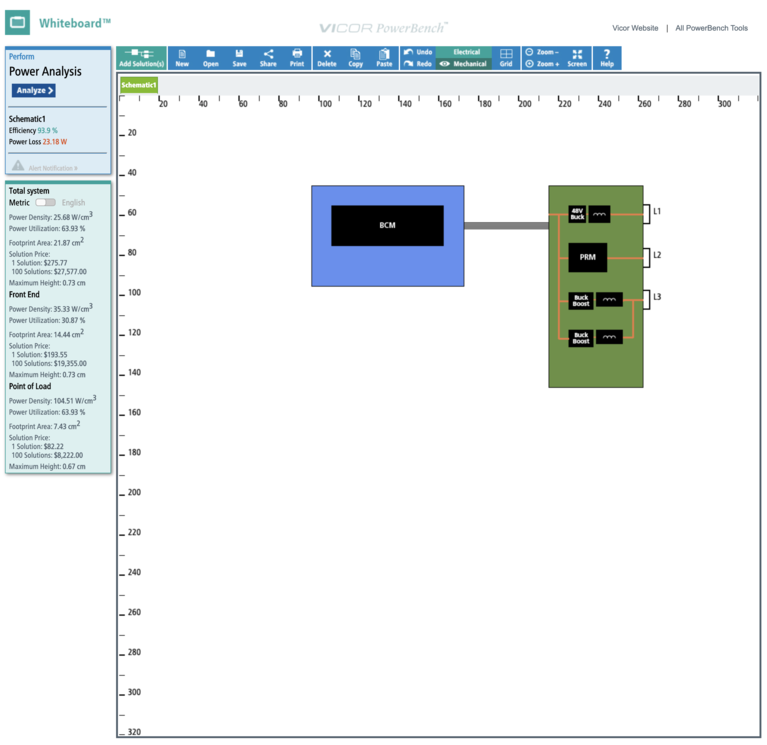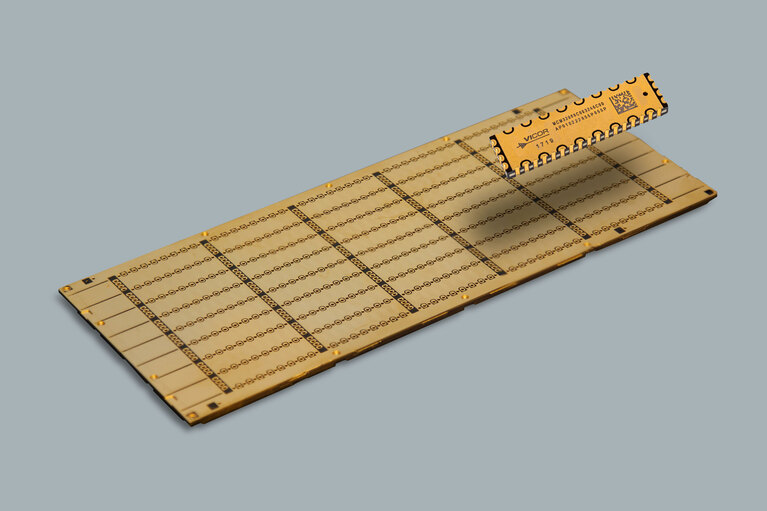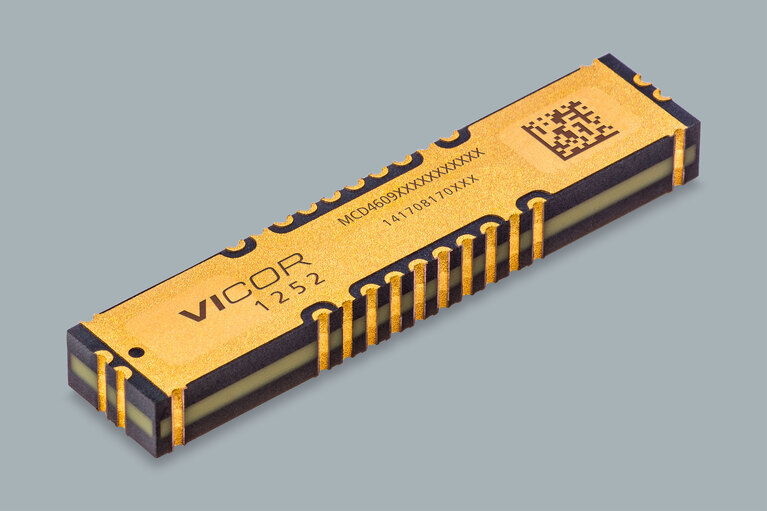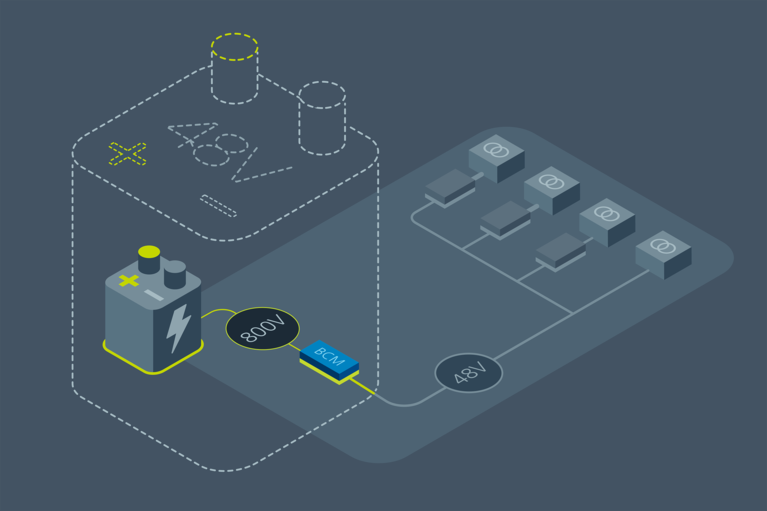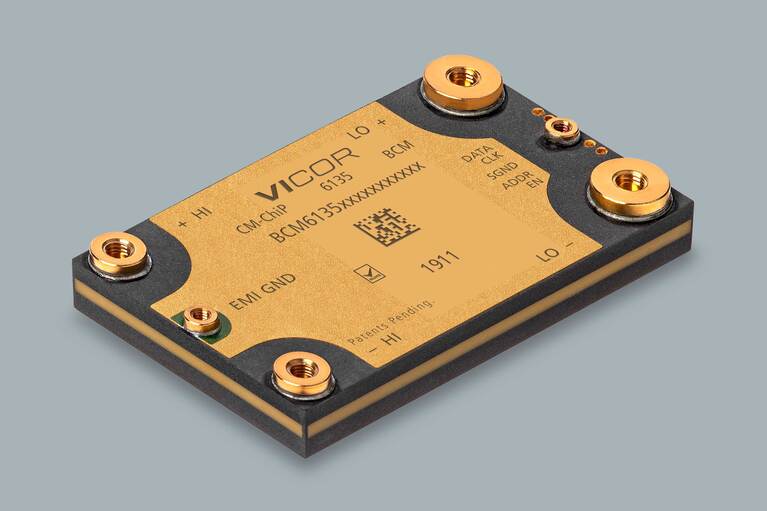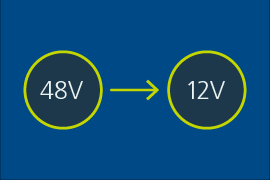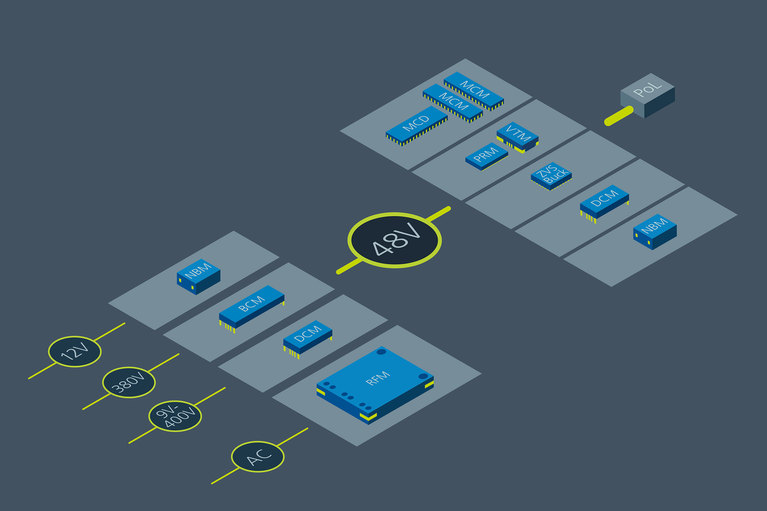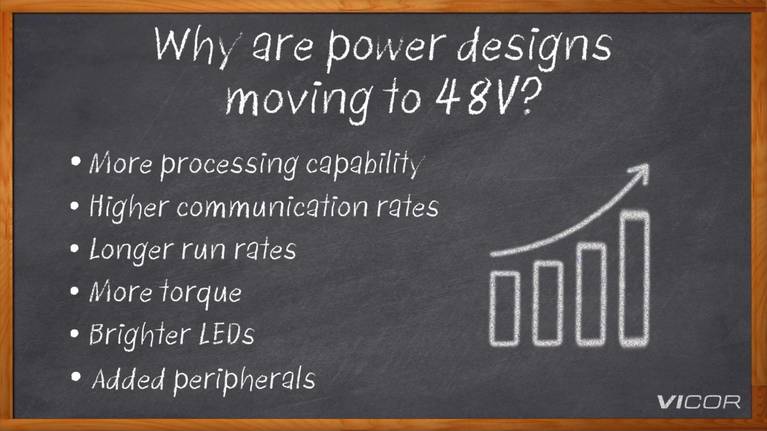
Innovating power delivery networks
Vicor is innovating with power delivery networks. Improving end-system performance requires innovative power technologies
Enabling flexibility, scalability, and the highest power density
Vicor has established a power module capability spanning product design, manufacturing, simulation and selection tools. This capability allows Vicor to enable power systems designers to quickly and easily deploy high-performance power delivery networks (PDNs), from the power source to the point-of-load (PoL) for end systems extending across many different industries such as (automotive, AI/data center, defense and aerospace, LED lighting, etc.).
This modular power component approach signifies a new standard within the power industry, addressing the increasing power needs of modern, high-performance end systems with a methodology that also provides other power system benefits such as reduced power system footprint, high efficiency and faster time to market.
Power delivery networks are rapidly changing within many end systems across many industries today. The power requirements for these different systems vary widely from each other and require a wide portfolio of modules to enable the maximum flexibility for a modular power component methodology to be employed. The range of modular power solutions Vicor provides include:
In addition to the above, there are also different control features such as telemetry, compensation and programmability, plus any industry/safety certifications that can be required.
To effectively support different PDNs in different industries with an optimized solution, a comprehensive power module approach in needed. Utilizing power modules follows the practice and benefits of a mass customization capability. Mass customization enables the ability to offer unique PDNs optimized for different end systems while benefiting from common design and manufacturing processes. Common, scalable design and manufacturing processes also offer advantages in faster time-to-market, reliability, technology risk and cost management.
The key elements of this power module approach are:
Multiple PDN designs are enabled by a large power module portfolio offering a range of functionality, scalability and performance. Selecting the optimized power modules for different power delivery architectures out of the portfolio and building the highest performing PDN is possible with the Power System Designer and Whiteboard tools (Figure 1). These tools provide an environment to analyze different architectures and modules optimized for overall performance, cost or size considerations. The modular power component design methodology—supported by a large power module portfolio and tools for selection and optimization—is the more visible element to the Vicor power module approach since customers use it to interface with Vicor daily. It is the second element of power modules, the power module design itself, that is not as visible to customers — but it is equally important to providing the benefits of mass customization.
Figure 1: Example of a power delivery network designed and optimized using the Vicor Whiteboard tool.
Vicor has innovated flexible switching topologies that can adapt to the various power conversion functions and needs. Topologies vary in their functionality, and one or more can be used within a power module. The Sine Amplitude Converter(SAC™) topology is one of the most common topologies and can be quickly configured to different power requirements, primarily by means of changes to the FETs and planer magnetics within the module design. The use of flexible switching topologies allows for quick development time and low risk for new power modules optimized to meet specific application needs.
Vicor developed the CM-ChiP™ common package technology to maximize power module density and thermal performance. The CM-ChiP package is a 3D package with an internal mid-plane substrate that enables component placement on both the top and bottom sides. Package thermal impedance is equal from the top and bottom sides of the package, allowing for dual-sided cooling if desired. Exterior plating options provide flexibility for shielding options and terminal connections, which include surface-mount, pinned and chassis-mount terminations. No tooling is required for different form factors or terminal connections. By using the CM-ChiP common package technology, a faster time to market and a higher level of performance predictability can be achieved in new power module designs. The CM-ChiP is fabricated within a panel fabrication process, which is similar to a wafer fabrication process (Figure 2).
Figure 2: Panel fabrication process enabling configurable CM-ChiP packaging.
Both processes enable multiple modules or devices to be fabricated from a single panel or wafer, standardized on a fabrication line. The panel can accommodate various module form factors with the largest possible module utilizing the full panel. A critical element to mass customization, the panel fabrication process shifts the manufacturing focus away from conventional fragmented,single-component package support and yield-enhancement efforts towards panel-level efforts that encompass all products.
Flexibility within the PDN architecture and design includes the ability to parallel most power modules for increasing system power demands. In addition, Vicor can increase module power delivery by scaling the power module itself to a larger size. Scaling can be accomplished by module linear scaling, increasing the power capability by modifying the core module design to a higher power level.Another scaling option is integer scaling where 2x, 3x, 4x power capability is possible by singulation of more than one base module from the panel (Figure 3).
Figure 3: Scaling approaches with the panel fabrication process: linear scaling (left) and integer scaling (right).
When artificial intelligence (AI) processor power system designers wanted to maximize their processor performance on an AI accelerator card, they turned to Vicor. Power performance requirements for the processor called for the delivery of500 A+ at a sub-1 V level (Figure 4). In addition, the power delivery network needed to fit within the industry-standard Open Compute Platform OAM card pushing the power density limits of conventional multi-phase buck regulators.

Figure 4: Power delivery network for advanced AI processors delivering 500A+ at sub-1V.
Vicor configured a SAC-topology-based module, the MCM4609 with a K-factor of 1/48, to fit within the north and south sides of the AI processor with dimensions of 46 x 9 x 3.2 mm (Figure5). Each MCM4609 provides 325A, or 650A continuous in total at sub-1V levels to the processor. The MCM4609s receive a drive signal from theMCD4609 module completing the power delivery network. The AI PDN provides unparalleled density and proximity to the processor minimizing PCB losses.
Figure 5: MCM4609 power module for AI processor power delivery.
Similar to the AI processor need, when approached to develop a high-density electric vehicle (EV) battery PDN, Vicor was able to quickly configure a SAC-topology-based module to meet those needs (Figure 6).
Figure 6: Power delivery network for 800V EV battery power conversion.
EVs require a 48V rail to support non-motor loads within the vehicle from the primary battery in addition to requiring a chassis-mounted package. Conventional solutions to provide 48V from the 800V battery in an efficient and lightweight manner were limited.
Vicor therefore developed a SAC-topology-based module with a 1/16 K-factor within a larger CM-ChiP (compared to the AI MCM4609) to accommodate higher power and chassis mounting. The power module, BCM6135, provides 800VIN to 48VOUT at 80A (or 3.8kW of output power) conversion at over 97 % efficiency in a 61 x 35 x 7.4mm CM-ChiP package (Figure 7).
Figure 7: BCM6135 power module for EV battery voltage conversion.
Additional power modules downstream of the BCM6135 support regulated 12V and 48V rails to complete the power delivery network (PDN). The high-density and high-efficiency attributes of the BCM6135 and downstream power modules enable a reduced weight and higher-performing EV battery conversion (Figure 5).
Vicor innovations in configurable and scalable package, combined with innovations in power design topologies enable a modular approach to PDNs that delivers high power density and efficiency to a wide array of industries. Solutions for automotive and data center applications demonstrate that it is not enough to simply reduce size. The biggest impact comes from combining these innovations and applying a modular methodology to solving the toughest power challenges.
This article was originally published by Power Electronics Europe.
Innovating power delivery networks
Vicor is innovating with power delivery networks. Improving end-system performance requires innovative power technologies
Modular approach solves 48V power architecture electrification challenges
Power dense modules from Vicor are the best way to accelerate automotive electrification. They are flexible, light weight and easy to use
Power System Design: When less is more
Vicor offers smaller and more efficient modules that will assist designers in this challenge
Why are power designs moving to 48V?
To power the next generation of data centers, electric vehicles and AI-driven technologies, industries are moving to 48V power



